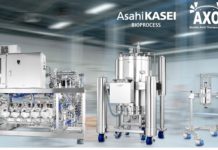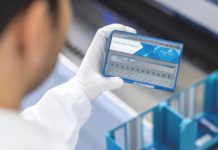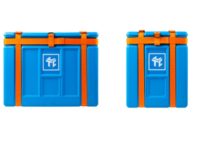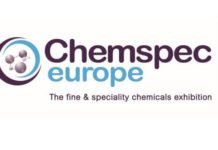Ferrer, a privately-held Spanish pharmaceutical company with full vertical integration from R&D to distribution, announces today that it has successfully completed a phase III clinical trial in adult and paediatric patients with impetigo involving Ozenoxacin formulated as a topical treatment for dermatological infectious conditions.
The study demonstrated the superiority of Ozenoxacin 1 per cent cream, applied topically bid for five days, versus placebo on both the clinical and bacteriological endpoints by end of therapy visit (day 6-7). In addition, Ozenoxacin 1 per cent cream demonstrated a superior bacteriological cure compared to placebo as early as visit two (day 3-4). The trial also demonstrated that Ozenoxacin 1 per cent cream is safe and very well tolerated in the adult and paediatric population, which confirms the results of an absorption, tolerance and safety study in juveniles aged two months and above announced previously.
The trial, conducted at 27 centers in the United States, South Africa, Germany, Romania and Ukraine, involved 465 adult and paediatric patients aged two years and older with a clinical diagnosis of bullous or non-bullous impetigo.
Ozenoxacin is a novel non-fluorinated quinolone antibacterial agent. In preclinical studies, the bactericidal action of Ozenoxacin (via potent dual inhibition of DNA gyrase and Topoisomerase IV) has been shown to confer an excellent in vitro and in vivo antibacterial activity against a broad range of pathologically relevant bacteria. Importantly, given the maturity of other products in this field, these include clinical isolates of organisms with emerging resistance to quinolones and other commonly prescribed topical antibiotics.
“Impetigo due to bacterial skin infections remains a common problem worldwide, especially in infants and young children living in warm, humid climates,” said Fernando Garcia Alonso, chief scientific officer at Ferrer. “The emergence of treatment resistant bacterial pathogens underpins the need for alternative agents. The clinical studies performed by Ferrer with Ozenoxacin aim to provide infants and others with impetigo an alternative, safe and effective topical antibacterial treatment. In addition, Ozenoxacin could represent a topical treatment for a broad range of other infectious dermatological conditions, with a combined market value approaching USD 800 million per annum. This study, along with a previously announced absorption, tolerability and safety trial in adult and juvenile patients with impetigo aged two months and over, may form the basis of a first regulatory filing for Ozenoxacin in 2015.”
The product is available for licensing worldwide from Ferrer, except in China, Japan, Korea and Taiwan.
About Impetigo
Impetigo is a highly contagious bacterial skin infection. It most commonly affects infants, young children and those involved in close contact sports or living in enclosed environments; it is not common in adults. In the USA, impetigo is estimated to account for approximately ten per cent of the skin problems observed in paediatric clinics. It is also considered the most common bacterial skin infection and third most common skin condition of children.
The condition usually manifests itself as blisters or sores on the face, neck, hands, and trunk. Scratching may spread the lesions to other parts of the body and the infection is transmitted between individuals by direct contact with lesions, with nasal carriers or sharing of towels etc.
There are two types of impetigo: bullous, which causes large, painless, fluid-filled blisters and non-bullous (70 per cent of cases), which is more contagious and causes sores that quickly rupture to leave a yellow-brown crust. Both the bullous and non-bullous forms of impetigo are primarily caused by Staphylococcus aureus, with Streptococcus pyogenes also commonly involved in the non-bullous form.
About Ozenoxacin
Ozenoxacin belongs to a new generation of non-fluorinated quinolones. It is undergoing clinical development, formulated as a topical 1 per cent cream, for dermatological infections. The bactericidal action of Ozenoxacin has resulted in an excellent in vitro and in vivo antibacterial activity against a broad range of pathologically relevant bacteria, including Staphylococcus aureus Methicillin resistant strains and clinical isolates of organisms with emerging resistance to quinolones and other topical antibiotics.
The clinical efficacy of topical Ozenoxacin cream has previously been demonstrated in a phase II dose-finding study in adult patients with secondarily infected traumatic lesions (SITLs). Extensive preclinical and clinical studies conducted in healthy subjects and adult and paediatric patients (aged two months and older), have demonstrated that topically formulated Ozenoxacin is both efficacious, safe and well tolerated, exhibiting no dermal absorption and no evidence of the adverse effects associated with topically formulated halogenated quinolones.
Ozenoxacin could represent a first-in-class non-fluorinated quinolone treatment option (best-in-class quinolone) for the topical treatment of a broad range of infectious dermatological conditions, including those due to staphylococcus aureus and streptococcus pyogenes, the most commonly encountered pathological causes of impetigo and other skin infections such as SITLs. The worldwide market for topical antibacterial products is approximately USD800M per annum.
Ferrer obtained exclusive worldwide rights to Ozenoxacin (except China, Japan, Korea and Taiwan) from Toyama. Ozenoxacin formulated as a 1 per cent topical cream is the subject of a number of granted and pending patent applications. The product is available for licensing worldwide from Ferrer, except in China, Japan, Korea and Taiwan.
About Ferrer
Founded in 1959, Ferrer is a privately-held Spanish pharmaceutical company, with full vertical integration from R&D to distribution. It is present in more than 90 countries, with 27 international affiliates. Ferrer is active in the pharmaceutical, health, fine chemicals and food sectors, key areas for contributing to people’s health and quality of life. Since its inception, Ferrer has been committed to the research and development of innovative medicinal products in its six R&D centers (four in Spain) and to a solid industrial structure, with 11 manufacturing centers (seven in Spain). This research and manufacturing capacity covers the pharmaceutical, diagnostics, vaccines, fine chemical, food and feed sectors.
In recent years, it has concentrated on diversifying across the whole healthcare spectrum, including prescription drugs, hospital products, molecular diagnostics, OTC and self-care. This diversification goes hand in hand with the setting-up and consolidation of strategic alliances.
The main therapeutic areas covered by Ferrer’s pharmaceutical production are dermatology, cardiovascular, CNS, cancer, gastrointestinal, analgesics, bone metabolism, anti-infective, immunology, diagnostics, OTC and dermocosmetics.


























